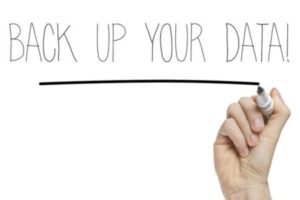Files on a computer can represent anything from years of work to irreplaceable mementos of times past, all of which can vanish without a trace if the worst happens and your equipment fails. The result of losing that data can range from a tragedy to a significant financial loss, and in a world where any number of unforeseen problems can destroy hard drives and other equipment without a moment's notice, it pays to be prepared for catastrophe with data backups.
There is no absolutely, one-hundred-percent effective way of keeping your data safe indefinitely. But it is possible to make a complete wipe exceedingly unlikely, by following a few basic and efficient rules for keeping your data backed up. The "3-2-1" method of handling backups is a simple system that is a standard in the IT industry, and which can be easily implemented by anyone from businesses to individual users to greatly reduce the risk of losing precious data.
The "3" in the 3-2-1 system is the simplest. Have at least three copies of your data, the original and two backups. That way if one goes down, you have two others; and if the unlikely event that two are lost at the same time, you have the third.
Item 2 is a little more complicated. To reduce the risk of concurrent mechanical failure, you should use at least two different storage mediums. For an example of a system that fails to follow this practice, consider the common backup procedure of having two hard drives in your computer, one that contains your files and one that the first hard drive is backed up to automatically on a daily or weekly basis. This isn't a bad idea--if the first drive fails, you can switch over to using the second almost immediately, so you can continue working while you try to recover any lost data from the first drive--but it does increase the chances of both devices failing at the same time, since the conditions that may have caused a fault in one are the same conditions that the other device has also been operating under. Therefore, if you're keeping the original on your computer's hard drive, it's a good idea to also put a backup on an external drive or the cloud.
And finally, the golden rule: have at least one backup off site from where you keep the original, to prevent a local disaster from destroying your data. Fires, earthquakes and floods are the sort of real calamities that can reset you to zero in so many ways, forcing you to rebuild your home or office from scratch. An offsite backup means that at least you won't lose any of your most important files along with everything else. This could be a cloud storage service, a long-term storage facility, or even just a flash drive in a safe deposit box at a bank that you replenish with any new files once or twice a year. This final part of the 3-2-1 strategy is oftentimes the most difficult to implement, but also the most crucial to ensuring that your data is secure no matter what happens.
Following all three steps should give you quick access to your local backups, while still keeping you covered if a more extreme equipment failure occurs. Again, no method of preventing data loss is 100% effective, but following these basic rules should let you recover from all but the most disastrous of circumstances.
Learn more about how Network Access can help you prepare for and back up your data by contacting Bob Famiglietti at 412.931.1111 or by filling out this form to schedule a consultation.
[pwebcontact id=3]

